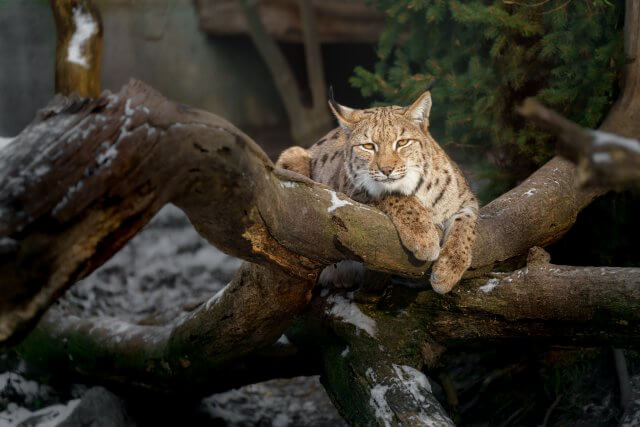Tiger Captivity: “Examining the Reality of Tiger Captivity in the US: A Comprehensive Look at the Numbers”
Tiger captivity in the US has been a controversial topic for many years. While some argue that it is necessary for conservation efforts and education, others believe it is cruel and inhumane. Regardless of personal opinions, it is important to understand the current state of tiger captivity in the US and the numbers behind it. In this introduction, we will explore the statistics and figures surrounding tiger captivity in the US, shedding light on the extent of this practice and its impact on both tigers and humans.
The Rise of Tiger Captivity in the US: A Statistical Analysis
Tiger Captivity: Tigers have long been a symbol of power, strength, and beauty. These majestic creatures have captured the imagination of people all over the world, and their presence in the wild has always been a source of wonder and fascination. However, in recent years, there has been a rise in the number of tigers being held in captivity in the United States. This trend has raised concerns among animal rights activists and conservationists, who argue that tigers should be allowed to live in their natural habitats. In this article, we will take a closer look at the statistics behind the rise of tiger captivity in the US and explore the implications of this trend.
 According to a report by the World Wildlife Fund (WWF), there are currently more tigers living in captivity in the US than there are in the wild. The report estimates that there are approximately 5,000 tigers living in captivity in the US, while the number of tigers in the wild is estimated to be around 3,900. This means that there are more tigers living in captivity in the US than in all of the countries where tigers are found in the wild combined.
According to a report by the World Wildlife Fund (WWF), there are currently more tigers living in captivity in the US than there are in the wild. The report estimates that there are approximately 5,000 tigers living in captivity in the US, while the number of tigers in the wild is estimated to be around 3,900. This means that there are more tigers living in captivity in the US than in all of the countries where tigers are found in the wild combined.
The majority of these captive tigers are not owned by zoos or accredited facilities, but rather by private individuals. In fact, the WWF report states that there are more tigers living in private ownership in the US than in all of the accredited zoos and sanctuaries in the country. This raises concerns about the welfare of these animals, as private owners may not have the necessary resources or expertise to properly care for tigers.
One of the main reasons for the rise in tiger captivity in the US is the popularity of exotic pets. Tigers are often seen as status symbols and are sought after by individuals who want to own something unique and exotic. However, tigers are not suitable pets and require specialized care and a large amount of space to thrive. This has led to many tigers being kept in inadequate conditions, which can have a detrimental effect on their physical and mental well-being.
Another factor contributing to the rise of tiger captivity in the US is the demand for tiger parts in the illegal wildlife trade. Tigers are highly valued for their body parts, which are used in traditional medicine and as status symbols. This demand has led to an increase in the breeding of tigers in captivity, as well as the poaching of tigers in the wild. This not only puts the lives of tigers at risk but also has a negative impact on their conservation in the wild.
The rise of tiger captivity in the US also has implications for the conservation of these animals. Tigers are an endangered species, with only six subspecies remaining in the wild. The captive tiger population in the US is not genetically diverse, as most of the tigers are bred from a small number of individuals. This lack of genetic diversity can have serious consequences for the long-term survival of the species.
In conclusion, the statistics behind the rise of tiger captivity in the US paint a concerning picture. The number of tigers living in captivity in the US is higher than the number of tigers in the wild, and the majority of these tigers are owned by private individuals. This trend not only raises concerns about the welfare of these animals but also has implications for their conservation. It is important for stricter regulations to be put in place to ensure that tigers are not exploited for profit and that their well-being and conservation are prioritized. Only then can we truly appreciate these magnificent creatures in their natural habitats.
Tiger Captivity: The Impact of Tiger Captivity on Conservation Efforts in the US
Tiger Captivity: Tigers are one of the most iconic and majestic animals in the world. With their striking orange and black stripes and powerful presence, they have captured the hearts and imaginations of people for centuries. However, their population has been rapidly declining in the wild due to various factors such as habitat loss, poaching, and human-wildlife conflict. As a result, many conservation efforts have been put in place to protect and preserve these magnificent creatures. But what about tigers in captivity in the US? How do they contribute to conservation efforts, and what impact do they have on the overall tiger population?
According to the World Wildlife Fund, there are currently around 5,000 tigers in captivity in the US. This number includes tigers in zoos, sanctuaries, and private ownership. While this may seem like a significant number, it pales in comparison to the estimated 3,900 tigers left in the wild. So, what role do these captive tigers play in conservation efforts?
One of the main arguments for keeping tigers in captivity is that they serve as ambassadors for their wild counterparts. Zoos and sanctuaries often use tigers as a way to educate the public about the threats facing wild tigers and the importance of conservation. Visitors can see these magnificent animals up close and learn about their behavior, habitat, and the challenges they face in the wild. This can help raise awareness and inspire people to take action to protect tigers and their habitats.
Moreover, captive tigers can also serve as a genetic reservoir for the wild population. Due to habitat fragmentation and poaching, wild tigers often suffer from a lack of genetic diversity, which can lead to health problems and reduced reproductive success. By breeding captive tigers, zoos and sanctuaries can introduce new genes into the wild population, helping to maintain genetic diversity and increase the chances of survival for wild tigers.
However, there are also concerns about the impact of captive tigers on conservation efforts. One of the main issues is the potential for captive tigers to be used for illegal trade. In the US, there are more tigers in captivity than in the wild, making it a prime location for the illegal trade of tiger parts. This not only poses a threat to the captive tigers themselves but also to the wild population. The demand for tiger parts, such as bones and skins, fuels poaching and illegal trade, which ultimately contributes to the decline of wild tigers.
Another concern is the welfare of captive tigers. While zoos and sanctuaries may provide a safe and comfortable environment for tigers, private ownership can lead to neglect and abuse. Tigers are wild animals and require specialized care, which many private owners may not be equipped to provide. This can result in physical and psychological harm to the tigers, which not only goes against the principles of animal welfare but also undermines the conservation efforts for these animals.
In recent years, there have been efforts to regulate the ownership and breeding of tigers in the US. The Captive Wildlife Safety Act, passed in 2003, prohibits the interstate trade of big cats for the pet trade. In 2016, the US Fish and Wildlife Service also implemented new regulations for the breeding and ownership of tigers, requiring permits and inspections for facilities that breed or exhibit tigers. These regulations aim to prevent the exploitation of captive tigers and reduce the potential for illegal trade.
In conclusion, while captive tigers in the US may serve as ambassadors for their wild counterparts and contribute to genetic diversity, there are also concerns about their impact on conservation efforts. The illegal trade of tiger parts and the welfare of captive tigers are significant issues that need to be addressed. Regulations and stricter enforcement are crucial in ensuring that captive tigers are not a hindrance but a valuable asset in the fight to save these magnificent animals from extinction.
Conclusion
In conclusion, the numbers surrounding tiger captivity in the US are concerning. With an estimated 5,000 tigers being held in captivity, it is clear that there is a significant demand for these animals in the US. However, the lack of regulation and oversight in the industry raises concerns about the welfare and safety of these tigers. It is important for stricter laws and regulations to be put in place to ensure the well-being of these animals and to prevent the exploitation of tigers for profit. Additionally, efforts should be made to educate the public about the consequences of supporting tiger captivity and to promote conservation efforts for these endangered animals in their natural habitats. Only through these measures can we truly address the issue of tiger captivity in the US and work towards a more ethical and sustainable future for these majestic creatures.
Read More About Tigers From Wikipedia






